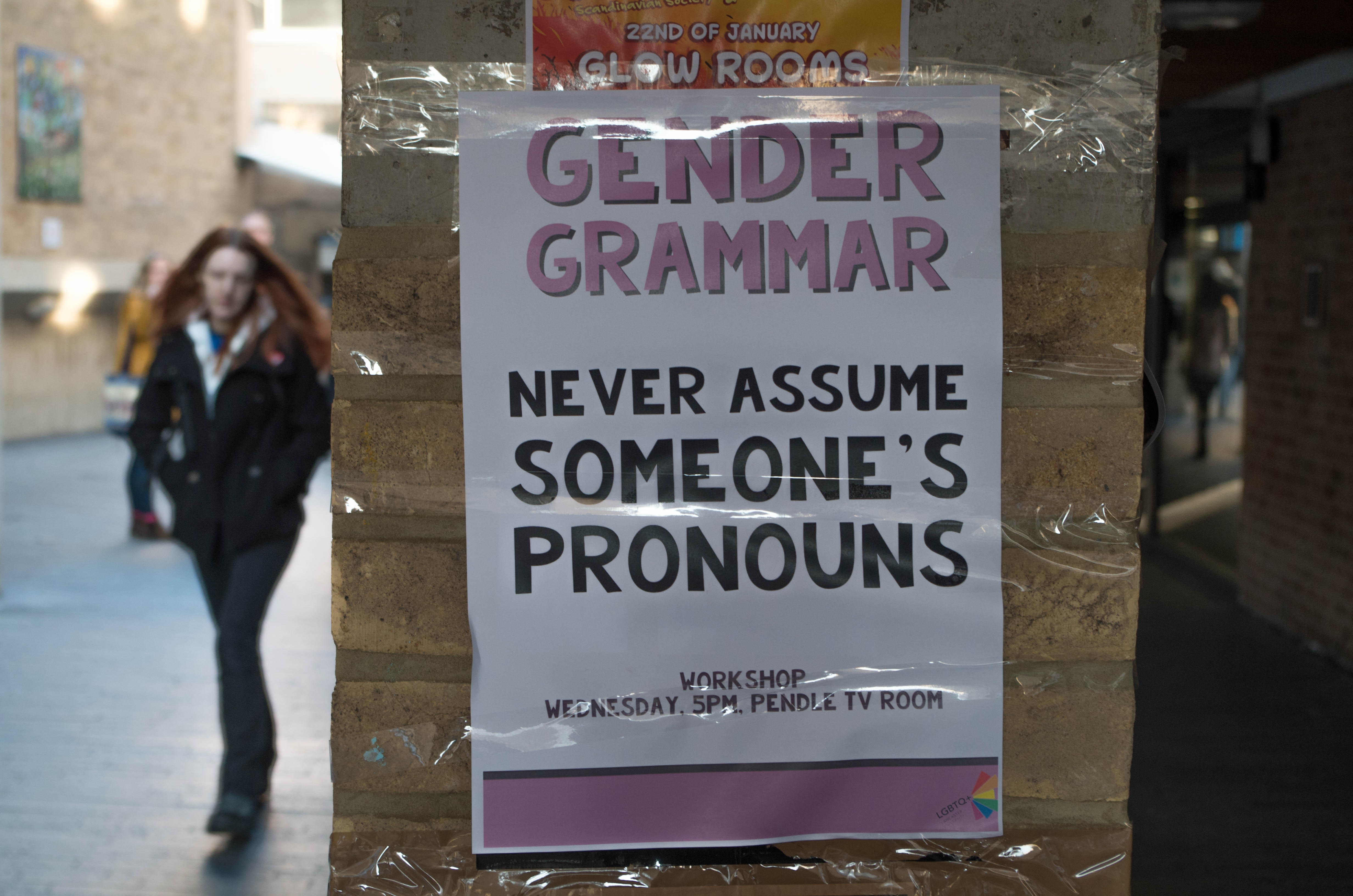By Petruce Jean-Charles | Published by Feb. 24, 2019
Imagine this: you identify as non-binary but one day you are interviewed by a journalist and because you look feminine, you are automatically referred to in her report as” she.” The reporter is now unknowingly disrespecting your desire to not be addressed as she, and now an issue of gender pronouns arises within journalistic writing.
“One way of being affirming and supportive of non-binary identities is to avoid these assumptions and always ask or provide an option to disclose preferred gender pronouns,” according to The Society for the Psychology of Sexual Orientation and Gender Diversity.
As of May 31, 2017, the Associated Press permitted journalists to use “they” as a singular pronoun. Following many years of confusion, editors and reporters can now rest at ease on addressing people that identify as non-binary correctly.
Non-binary refers to gender identities that are not exclusively masculine of feminine, individuals who identify as such may have both of neither characteristics. For those who lack understanding on this topic, Poynter Institute issued an entry on the usage of these pronouns.

According to Poynter Institute Journalist Kristen Hare, “They/them/their is acceptable in limited cases as a singular and-or gender-neutral pronoun…however, rewording usually is possible and always is preferable.” Hare wrote. “…explain in the text that the person prefers a gender-neutral pronoun.”
On Oct. 17, 2018 the Women’s and Gender Studies hosted its first International Pronouns Day: Gender Bender Workshop in the Human Rights Institute to spread awareness on non-binary identities within the workforce.
As prospective journalists in today’s society, we should be immersed in new innovations like gender pronouns.
Of course, using other pronouns like ze, xe are puzzling, but taking the effort to use “they” or getting to know the interviewee before assuming pronouns is essential as well.
I have friends and colleagues that identify as non-binary and express themselves through “they”, as a way to fit outside of the gender norms. Being a part of the LGBT community is not just about sexuality but about gender as well, and having the option to self-identify as something other than “she” or “he” is a huge step for AP style. Regina Wickine, a full-time Residential Student Services worker and staff for PRIDE opened up about her gender expression as a cisgender female.
“The importance of understanding non-binary pronouns comes from wanting to understand the people around us fully,” said Wickline. “A lot of times pronoun assumptions are based on the way we perceive a person…how you perceive someone is not necessarily that person’s reality. That’s why I think it’s important for those who feel comfortable to introduce ourselves by name and pronouns-making it more likely that others will do the same.”
“For most of us it isn’t really much of a thought and that is a major privilege, so the least we can do is make it easier and safer for others to be able to be themselves,” Wickline said. “Believe people when they tell you who they are, be kind and believe people when they express themselves to you. If someone in your life tells you they go by pronouns that differ from what you assigned to them, correct yourself and continue to move forward in that way.”
As for interviewing, Wickline advises reporters to introduce your name and pronoun for example, “Hi my name is Gigi and I go by she/her pronouns,” will make anyone feel comfortable explaining their pronouns.
“I would definitely shy away from any assumptions or trying to single anyone out. Be willing to learn, apologize if you mess up and continue to foster meaningful conversations like this one,” Wickline said.

You must be logged in to post a comment.